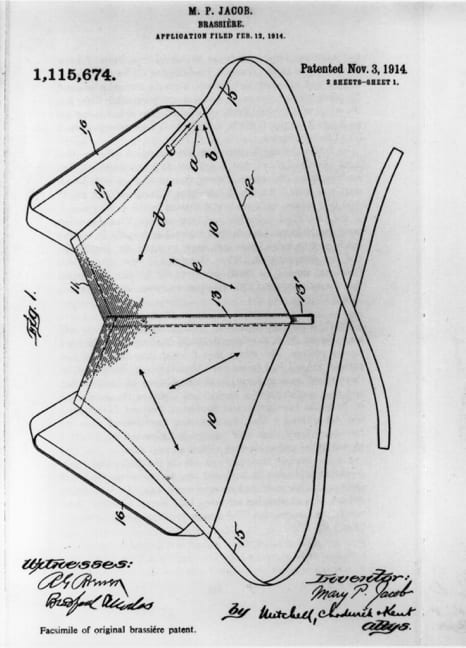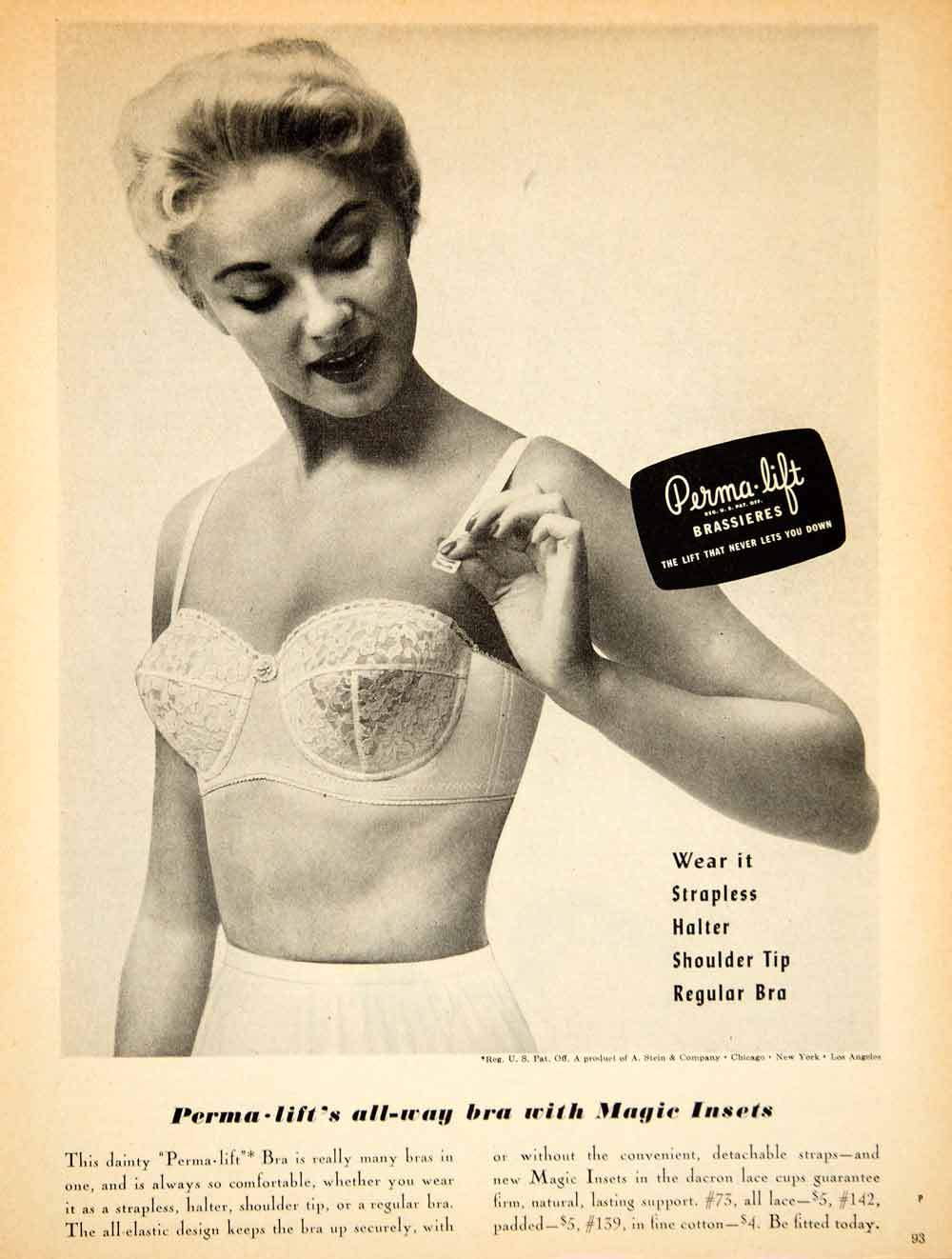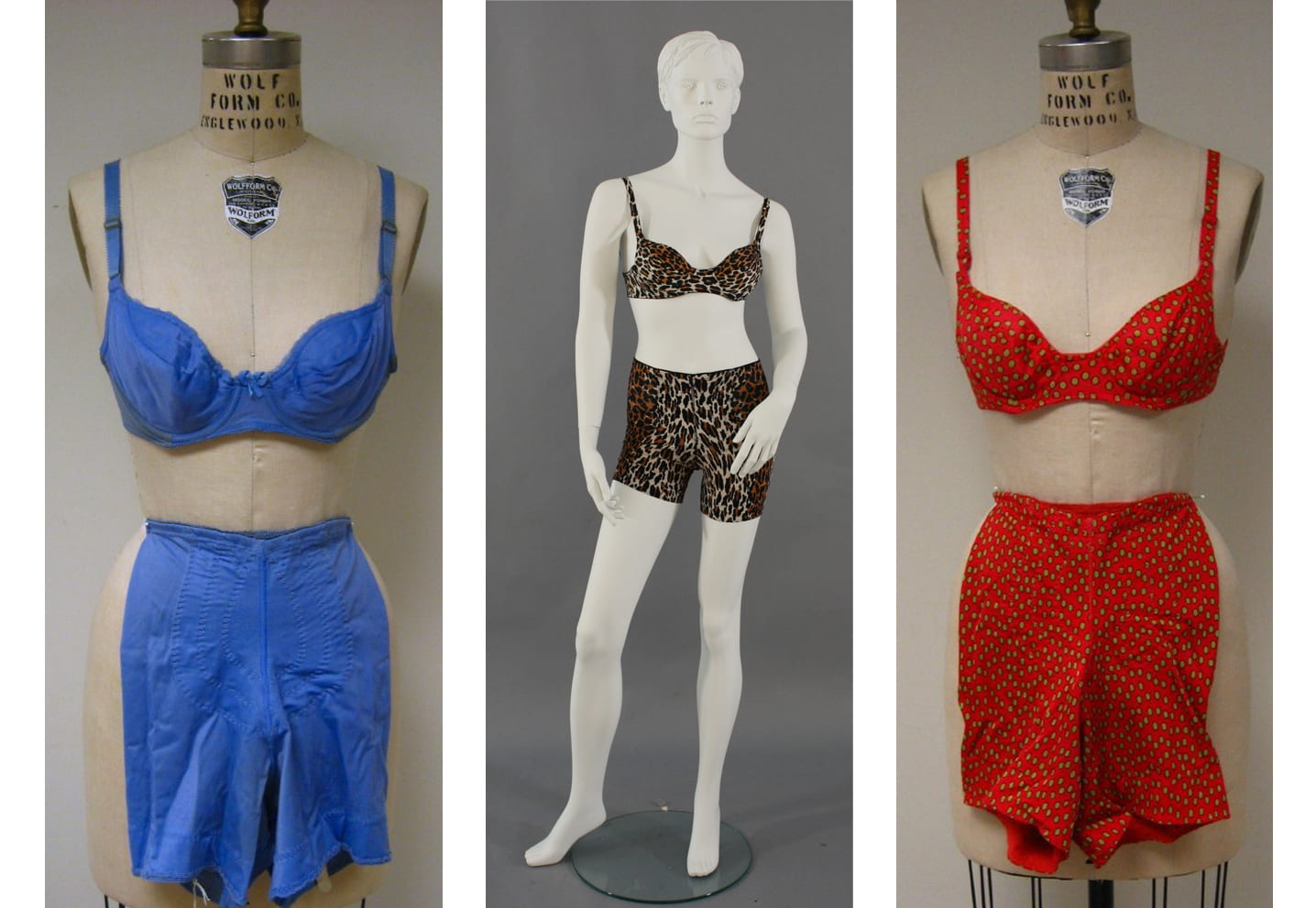Blog post by Allie Malakoff ’20.
You will never forget the first time you wore a bra. For me, this was a sentimental moment and signified a transition from girlhood to womanhood. Bra shopping, at first, was very overwhelming. Understanding sizing and fit is like learning a new language, and the way the bra manipulates the bust can feel unnatural or uncomfortable. In addition, the aesthetic array of colors, patterns, brands, styles, silhouettes, and shaping that are available today present women with an inordinate number of options; however, bras were not always so diverse. The design of this undergarment has shifted and progressed since the very first bra model in 1910.
The bra was said to be invented by socialite Mary Phelps Jacobs in 1910. Jacobs, like many women at the time, was sick of the constrictions of the corset. With the help of her maid, Mary tied together two silk handkerchiefs and a pink ribbon creating what she called the “backless brassiere.” That same year, Jacobs sold her first bra for $1.00 (that’s $26.07 when adjusted for inflation). It was in that moment she realized she had a potential business. Under the name of Caresse Crossby, Jacobs launched the Fashion Forward Brassiere company in Boston in 1914. The company was then sold to Warner Corset Company for $1500 (which equals $39,108.33 when adjusted for inflation). While this might have seemed like a generous amount of money at the time, but the Warner Corset Company ended up making about 15 million dollars on the patent over the next 30 years.
It wasn’t until World War One (WWI) that the brassiere increased in popularity. Efforts to conserve metal during the war, shifting roles of women as they joined the workforce and war effort, along with changes in fashion that resulted in a decline in corset purchases, all contributed to the initial success of the bra. With newfound freedom of movement and comfort, it seemed the bra had replaced the corset. Because of the increasing popularity of the brassiere, technology and innovation fueled further development of the undergarment. In addition, sizing and standardization developed and the S.H. company created standard cupping sizes in 1944. This cup sizing model is the same cupping sizing that is used today. Shortly thereafter in 1946, underwired metal bras became popular and the strapless bra was invented.
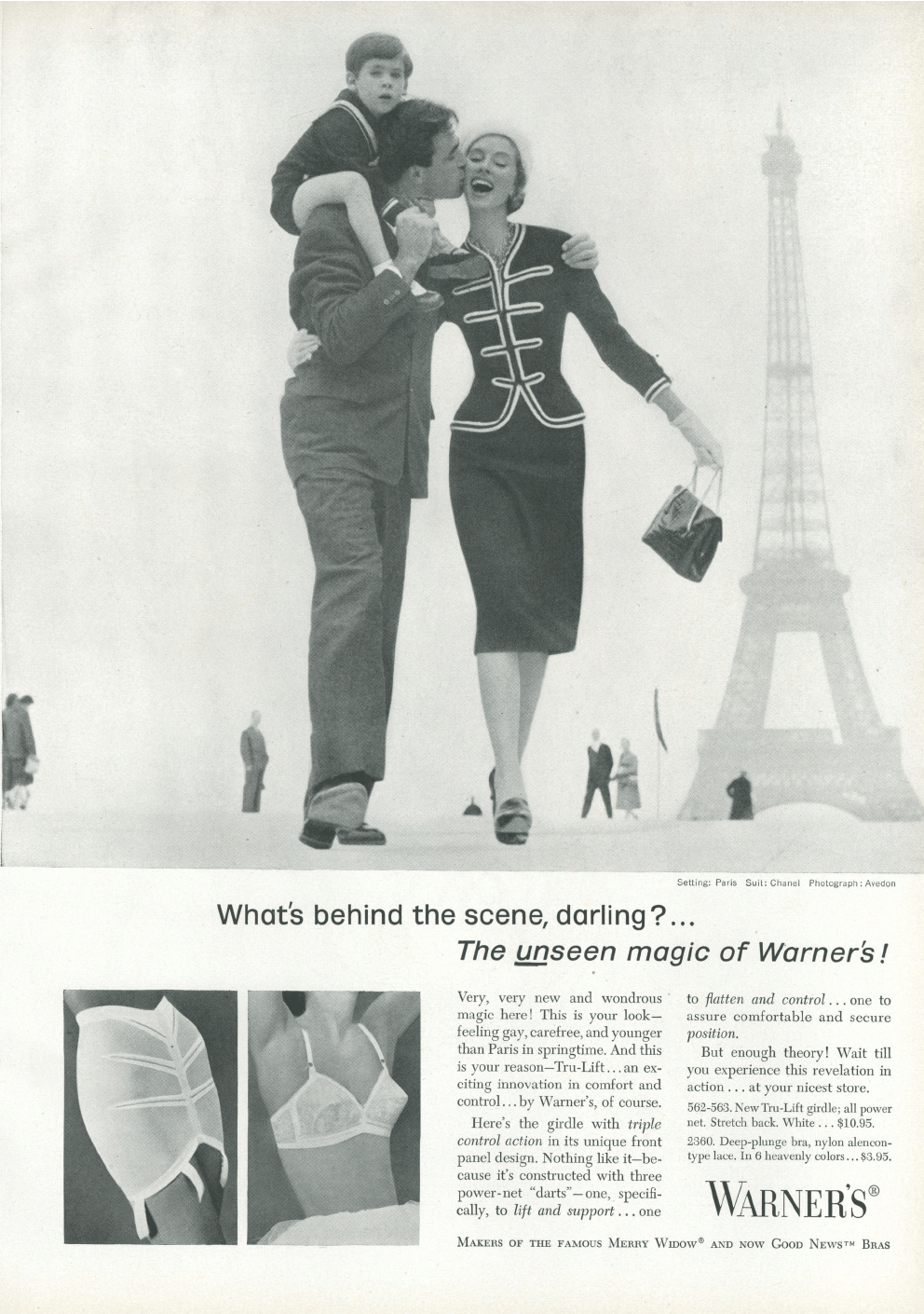
A 1957 Warner’s advertisement from Vogue Magazine that shows the silhouette created by the “bullet bra.”
During my research into the development of the brassiere, I had the opportunity to interview my Grandpa about his experience in bra manufacturing. He pioneered efforts for size inclusivity and developed “extra size bras,” which today are known as “plus size bras.” He developed “extra size bra” to accommodate women with a more generous body type and larger breasts that did not fit the standard sizing model. Prior to his company Sprite manufacturing, bras only extended to 34D; however, he expanded sizing norms to allow more women to feel confident and comfortable in their clothing and soon thereafter earned the moniker, “The King of Extra Sized Bras.”
My grandpa explained that there were two main trends during his time in manufacturing: first, was the “circle stitch bra,” also known as the “bullet bra.” This type of bra was popular in the 1950s and designed with topstitching that helped to create a pointy silhouette. Since most women couldn’t fill the pointed bra, they stuffed the tips of the cups with tissues. The second trend my grandpa noted was the matching bra and panty set. Women wanted everything to match. In the Cornell Fashion + Textile Collection we have a number of matching sets from the 1980s donated by Florita Mortlock. One set is a matching leopard panty and bra (CF+TC #2001.04.045) and the other set is a red and green polka dot pattern (CF+TC #2001.04.044). These sets demonstrate the type of patterns, style and fits my grandpa worked with during his manufacturing days.
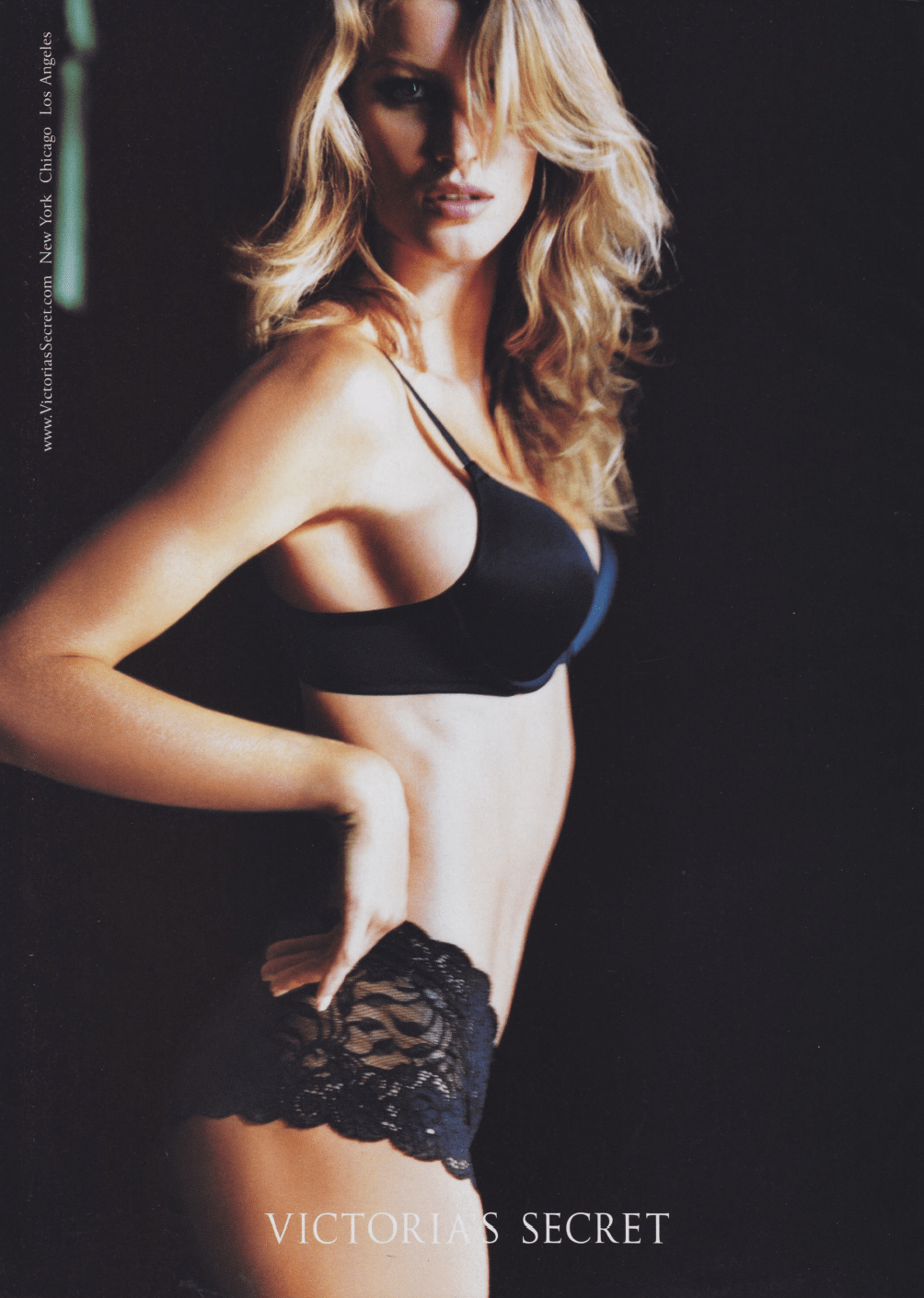
A Victoria’s Secret advertisement from Vogue’s November 2001 issue showcasing the typical type of model they used to market their bras.
When looking into the major players, it is safe to say that Victoria’s Secret pioneered the next wave of bras in the late 1970s and 1980s. The store was first designed to be a comfortable shopping experience for men to buy lingerie for women; however, as the company developed, they became known for their sexy runway shows. These shows showcased exquisite bras modeled by unrealistic body types. Victoria’s Secret had success in marketing their push up angel bras in the late 1990s and early 2000s, and women aspired to look the way the Victoria Secret Angels looked in their bras. However, many began to see through this marketing ploy and have recently started to look towards brands like AERIE and Savage X Fenty, which focus on a more body inclusive model—that is, a bra in which everybody type could feel comfortable and beautiful— a model similar to my grandpa’s “extra sized bra.” As we enter into a new wave of the brassiere, I hope the industry continues to focus on body inclusivity and comfort for all.



